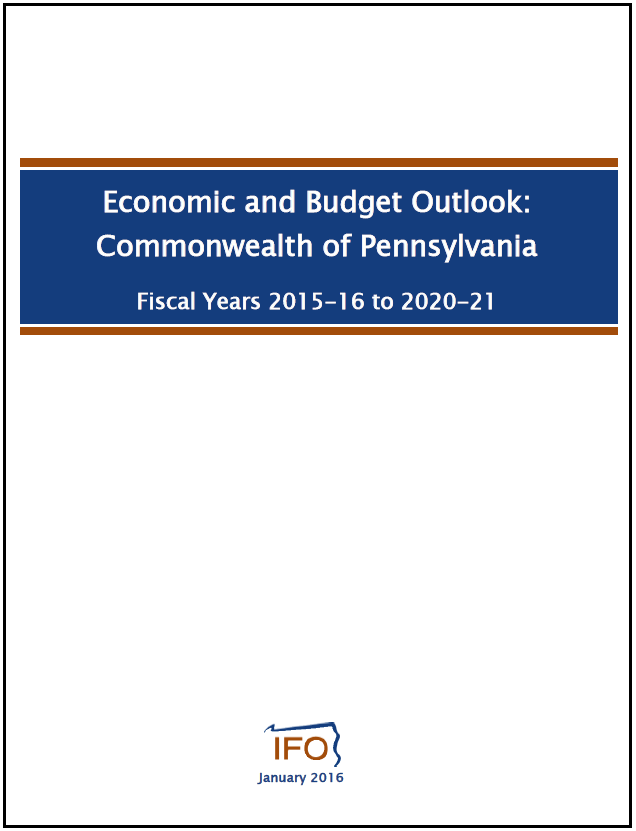Five-Year Economic and Budget Outlook: FY 2015-16 to 2020-21
January 27, 2016 | Revenue Estimates

This report examines the demographic, economic, revenue and expenditure trends that will affect the Commonwealth’s fiscal condition through fiscal year (FY) 2020-21. Based on the economic and demographic assumptions used by this report, the evaluation finds that various factors imply a long-term fiscal imbalance.
The demographic forecast projects modest population growth (3.4 percent) over the next decade. From 2015 to 2025, the forecast projects that:
- The number of residents age 19 or younger will contract (-0.5 percent).
- The number of residents age 20 to 64 will contract as well (-2.9 percent).
- The 65 or older age group will expand dramatically (31.5 percent).
Economic growth may be constrained by the projected contraction of the working age population. However, pent-up demand for housing and low energy prices could enhance the outlook for the state and national economies.
From FY 2015-16 to FY 2020-21, the forecast projects that General Fund revenues will increase at an average rate of 3.3 percent per annum. Personal income and sales taxes motivate most revenue gains. By FY 2020-21, those revenue sources will comprise more than three-quarters of General Fund revenues.
Motivated by statutory pension contributions and outlays related to healthcare, expenditures will increase at an average rate of 4.5 percent per annum:
- By FY 2020-21, pension contributions may reach $1.2 billion above current year levels. Excluding pension contributions, expenditures increase by 4.1 percent per annum.
- Expanding service populations (e.g., older residents who need long-term care services) and inflation motivate much of the remaining expenditure growth.
The analysis projects that expenditures will outpace revenues through FY 2020-21 under current laws and policies. The structural imbalance grows each year as tax base expansion is insufficient to maintain the level of real services provided in the current fiscal year.